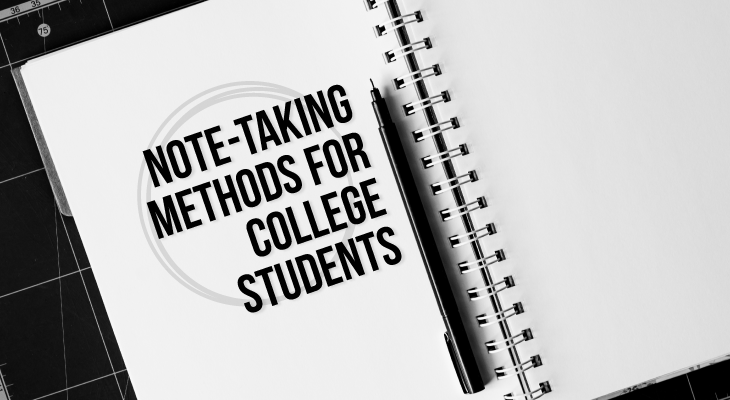The Best Note-Taking Methods For College Students

Ever heard that if you aren’t taking notes, you aren’t learning? The act of taking notes may seem time-consuming and tedious to some students. But taking them is vital to help you remember details you might otherwise forget. If you want to get the most out of taking notes, learn the material, and ace your tests, it will help to know the required note-taking methods for college students.
A good study note will make your life easier if you want to score well in your exams. Often, college students fail to make the best study notes because they do not have the skills to do so. They attend lectures prepared to learn but not prepared to make notes. Fortunately, this article will list the most effective note-taking techniques for college students. Let’s get started.
Topic Charting Method
Topic charts work best for study notes, involving a lot of comparisons or concepts that are similar but different in several areas. For instance, many overlapping shortcuts or techniques exist between various computer programming languages course at UPENN or social studies. You can study notes if you divide the sheet vertically into the number of topics.
You might divide it into three if you are learning programming languages like C++, Python, and JavaScript. You should always write details or facts under the appropriate column, like object-oriented ,C++, Java Certification details and imperative JavaScript. Having done that, you will have concise and comprehensive study notes
Cornell Method
Developed by Cornell professors in the 1940s, this note-taking system provides students with an organized and systematic format for writing notes. There are two columns on the page: a left column dedicated to keywords and phrases and a right column for more detailed notes.
It includes a concise note section at the end of a text or lecture that summarizes the main points emphasized in that text or course. As students review their notes with the help of Studocu — an easy-to-use platform for student notes and other study resources — they jot down relevant questions and main ideas. The two columns are a handy reference for students to scan their messages, allowing them to summarize information underneath.
This method has been used for decades and has proven effective, especially for coursework focusing on concepts rather than pure memory. Some key advantages of the Cornell note-taking method include:
- You can quickly review and summarize the notes as they are organized and easy to understand
- This method highlights major concepts and big ideas
Mapping Method
This method uses comprehension and concentration skills to map facts and ideas and develops into a note-taking format that connects facts and opinions. Maps serve as visual representations of lecture content. The method emphasizes critical thinking, maximizes active participation, and provides an immediate understanding of knowledge.
No matter the conditions, this format allows you to follow along with your lecture. You do not have to think much about the relationships; they are easy to see. Additionally, you can mark, number, and color code your notes. A review will require you to restructure your thinking, forcing you to examine your understanding. By covering lines, you will review memory drills and relationships. Later, you can compile the main points into a table or larger structure by writing them down on flash or note cards.
Comprehensive Outline Method
You can make study notes easier with outline notes since they make reading more accessible and allow you to record more information. Likewise, this method is excellent for lecturers who have much to remember and need to categorize the material. If you wrote your study notes for a history lecture in outline format, it would be much easier to digest the information.
Here’s how you can create your outline.
- At the top of your sheet, make a bullet point with the main idea or list name,
- Add more bullet points and add an appropriate symbol to the list of facts or ideas (i.e., A, B, C, etc.),
- Create a unique symbol that shows this is a list of the items listed, e.g., if the ideas under B are listed separately, make B1, B2, etc.)
Making a comprehensive outline is easier when using different colored pens or a highlighter. You can color the main points or highlight specific details depending on what you want to convey. For those who prefer digital note-taking, exploring Obsidian alternatives can provide additional flexibility, such as cross-platform syncing, collaborative features, or different organizational structures. Whether you choose traditional or digital methods, the key is consistency and clarity in your notes.
Conclusion
Taking notes is part of every learning process. Fortunately, you can use any of the above vital methods depending on your interests. It’s a crucial way for students to ace their examinations. Otherwise, they wouldn’t be learning.






